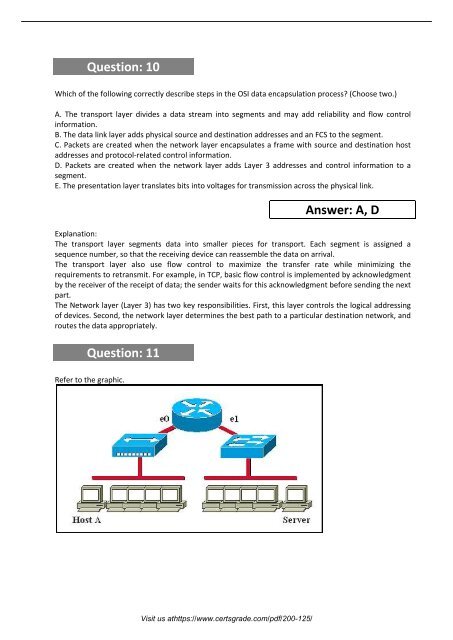200-125 Study Material
You also want an ePaper? Increase the reach of your titles
YUMPU automatically turns print PDFs into web optimized ePapers that Google loves.
Question: 10<br />
Which of the following correctly describe steps in the OSI data encapsulation process? (Choose two.)<br />
A. The transport layer divides a data stream into segments and may add reliability and flow control<br />
information.<br />
B. The data link layer adds physical source and destination addresses and an FCS to the segment.<br />
C. Packets are created when the network layer encapsulates a frame with source and destination host<br />
addresses and protocol-related control information.<br />
D. Packets are created when the network layer adds Layer 3 addresses and control information to a<br />
segment.<br />
E. The presentation layer translates bits into voltages for transmission across the physical link.<br />
Answer: A, D<br />
Explanation:<br />
The transport layer segments data into smaller pieces for transport. Each segment is assigned a<br />
sequence number, so that the receiving device can reassemble the data on arrival.<br />
The transport layer also use flow control to maximize the transfer rate while minimizing the<br />
requirements to retransmit. For example, in TCP, basic flow control is implemented by acknowledgment<br />
by the receiver of the receipt of data; the sender waits for this acknowledgment before sending the next<br />
part.<br />
The Network layer (Layer 3) has two key responsibilities. First, this layer controls the logical addressing<br />
of devices. Second, the network layer determines the best path to a particular destination network, and<br />
routes the data appropriately.<br />
Question: 11<br />
Refer to the graphic.<br />
Visit us athttps://www.certsgrade.com/pdf/<strong>200</strong>-<strong>125</strong>/
















